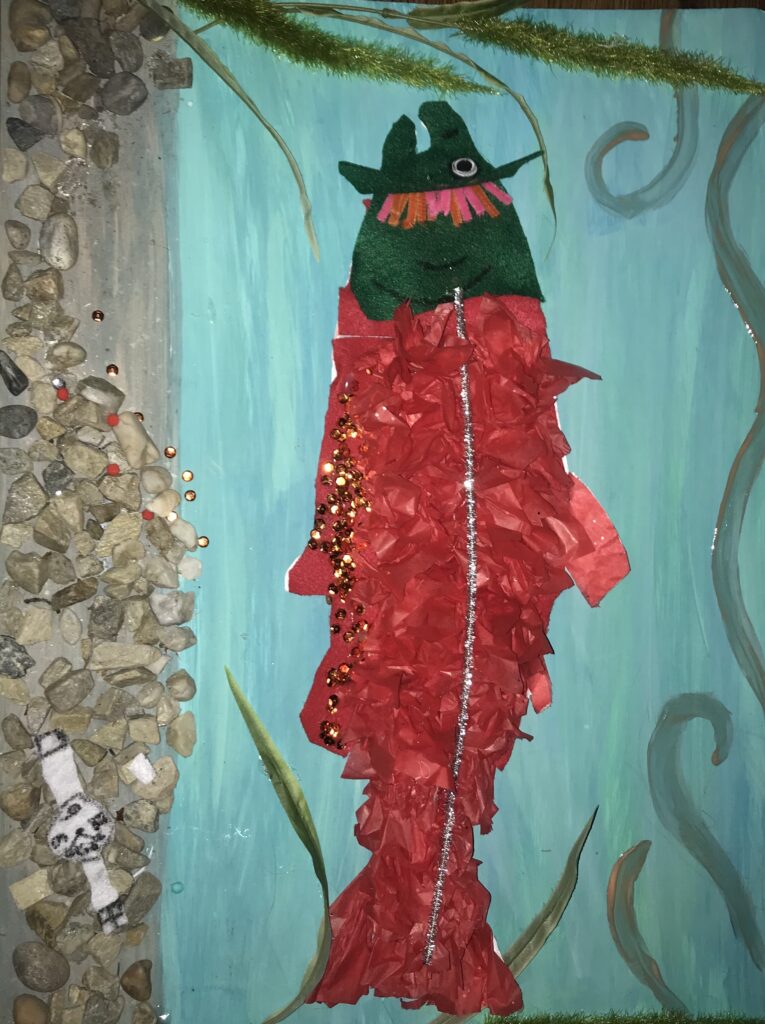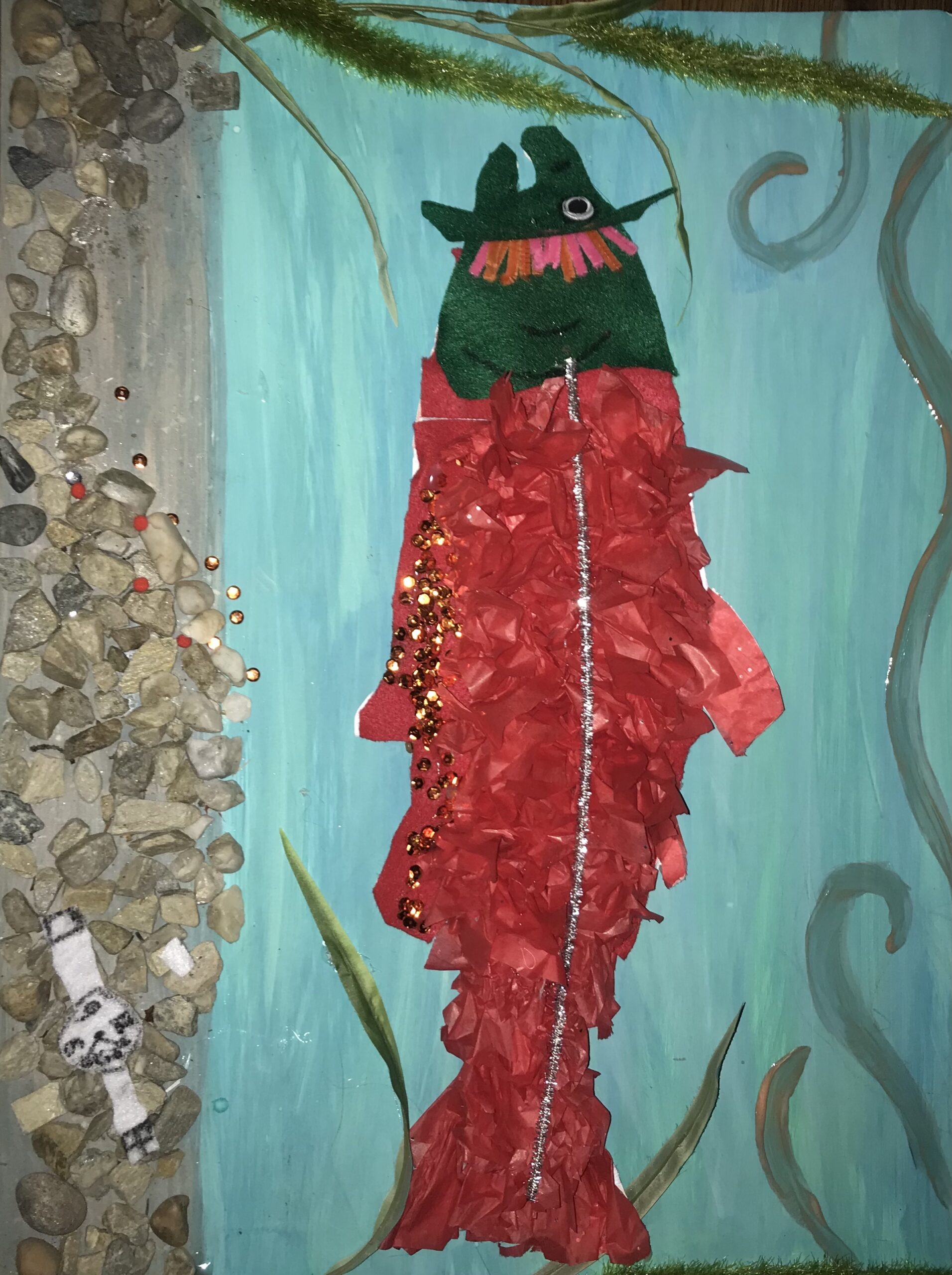In this multi media display a sockeye salmon can be seen hovering above a redd in the gravel. Climate change is increasing the temperature of marine and freshwater habitats of salmon species in Alaska and beyond. The response of salmon to temperature change has been the subject of recent research for improved natural resource management. Behavioral changes show salmon staying in tributaries longer, which provide cooler temperatures than main stem rivers. It has shown the favoriting of deep pools as fish escape the high surface temps as seen in the art as heat waves. The most sensitive life stage to these temperature spikes are the eggs that suffer immediate mortality or premature development followed by mortality. The redd shown displays salmon eggs being buried in cool gravel for the best chance at survival. Also pictured here are the gill rakers that are tested for stress hormones during high temperature events. Additionally, increased temperatures are throwing salmon rhythms off course which can lead to smolts leaving too soon for the marine environment or returning to the river at inopportune times for reproduction as symbolized by the sunken watch. The available algae and food (demonstrated by new plants) available to young salmon is changing- leading to a shift in in metabolic rate and energy stores.



This artistic rendition of a salmon swimming upstream illustrates how behavioral and physiological temperature coping strategies of salmon are becoming stretched to their limits by global warming, artistically indicated by warm colored swirls in the water and hyperactive gill rakers in the salmon. A wristwatch reminds us that with seasonal breeders, timing is everything, a phenological mismatch adds to the threat to salmon fisheries. The eggs laid by a temperature stressed female can be misshapen and malformed leading to a lower success rate of hatching.
Salmon already undergo huge changes in physiology, requiring major energy inputs, when returning from the ocean to their natal streams. Warming temperatures add metabolic stress and threaten fecundity and hatching success if the salmon make it back to spawn at all. In the past four years, harvest has been severely restricted or eliminated to help conserve the remaining salmon who are overcoming ocean warming, over harvest and bycatch, altered diets, and phenological mismatch. Salmon are traditionally well adapted to cold water conditions that can be challenging to other organisms, hopefully they can adapt to warmer climate conditions before they disappear.
This art piece takes a stand on the anthropocentric influence of global warming and the unintended consequences of consumption and burning fossil fuels. This is important because Alaskan salmon runs support many subsistence and indigenous communities. Traditionally salmon are caught in annual fish camps and preserved to last families throughout the year, providing both family traditions and nutrition for many Alaskans.